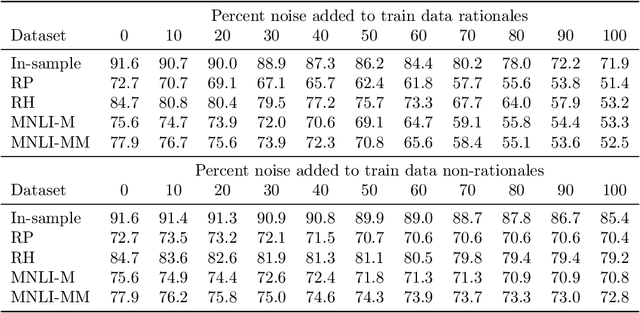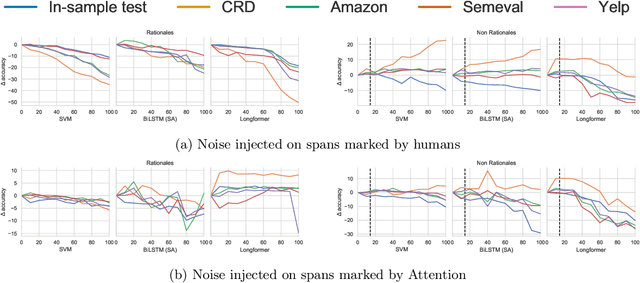Explaining The Efficacy of Counterfactually-Augmented Data
Paper and Code
Oct 06, 2020



In attempts to produce machine learning models less reliant on spurious patterns in training data, researchers have recently proposed a human-in-the-loop process for generating counterfactually augmented datasets. As applied in NLP, given some documents and their (initial) labels, humans are tasked with revising the text to make a (given) counterfactual label applicable. Importantly, the instructions prohibit edits that are not necessary to flip the applicable label. Models trained on the augmented (original and revised) data have been shown to rely less on semantically irrelevant words and to generalize better out-of-domain. While this work draws on causal thinking, casting edits as interventions and relying on human understanding to assess outcomes, the underlying causal model is not clear nor are the principles underlying the observed improvements in out-of-domain evaluation. In this paper, we explore a toy analog, using linear Gaussian models. Our analysis reveals interesting relationships between causal models, measurement noise, out-of-domain generalization, and reliance on spurious signals. Interestingly our analysis suggests that data corrupted by adding noise to causal features will degrade out-of-domain performance, while noise added to non-causal features may make models more robust out-of-domain. This analysis yields interesting insights that help to explain the efficacy of counterfactually augmented data. Finally, we present a large-scale empirical study that supports this hypothesis.
 Add to Chrome
Add to Chrome Add to Firefox
Add to Firefox Add to Edge
Add to Edge